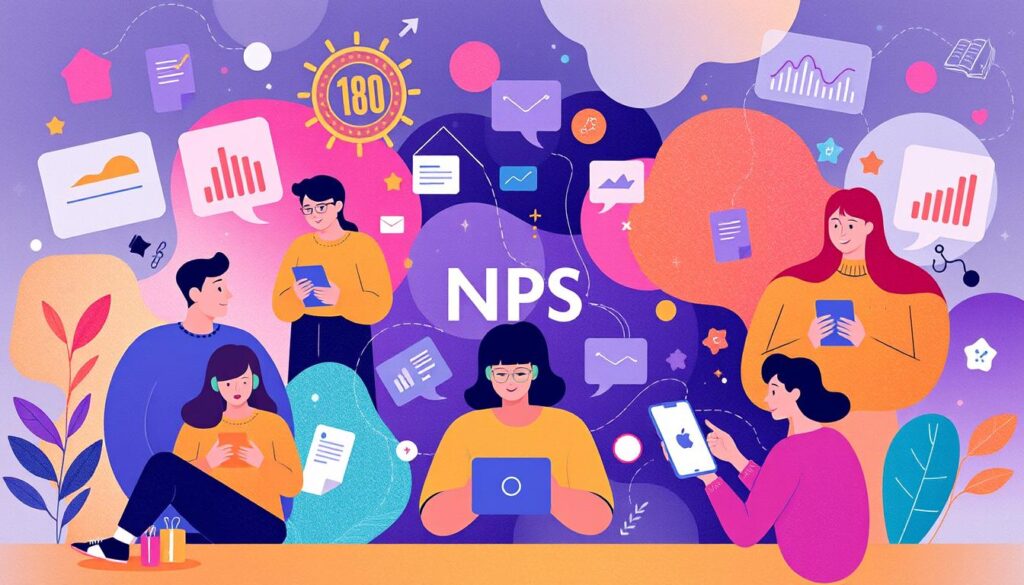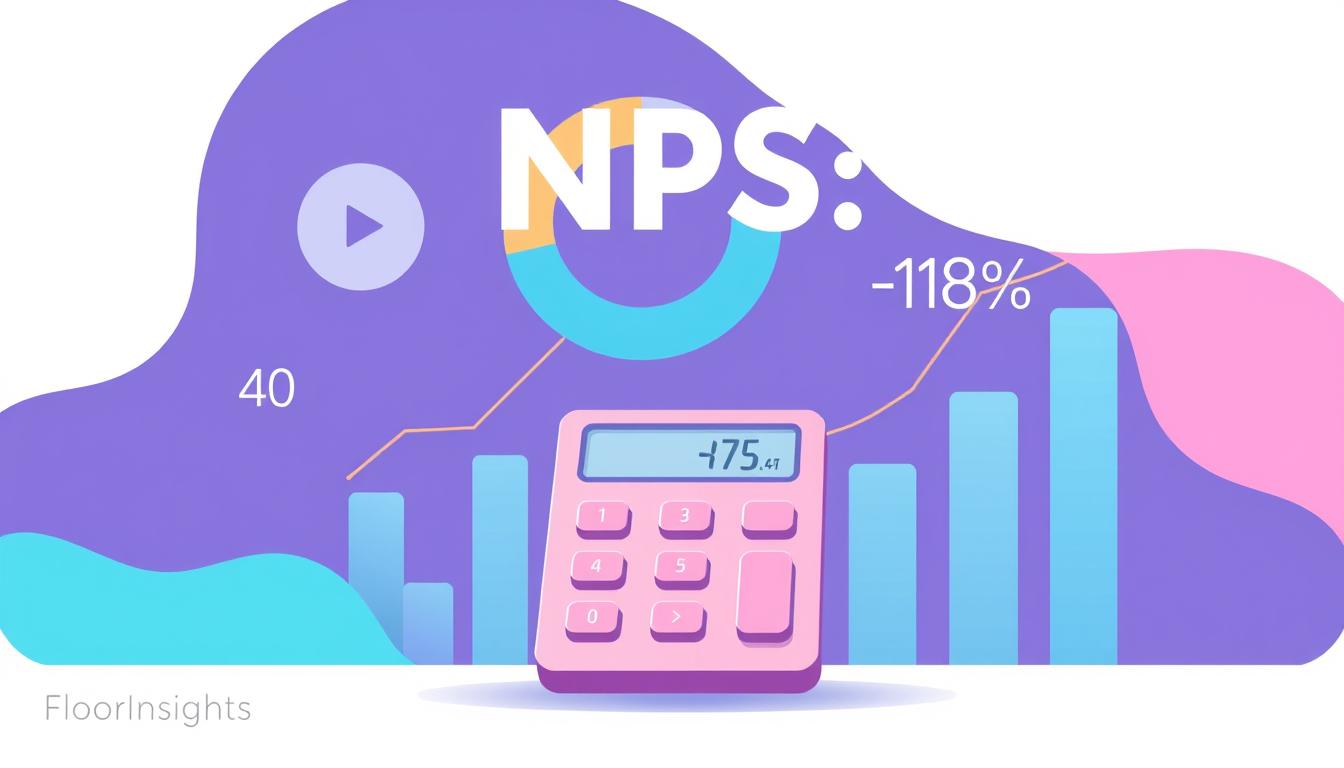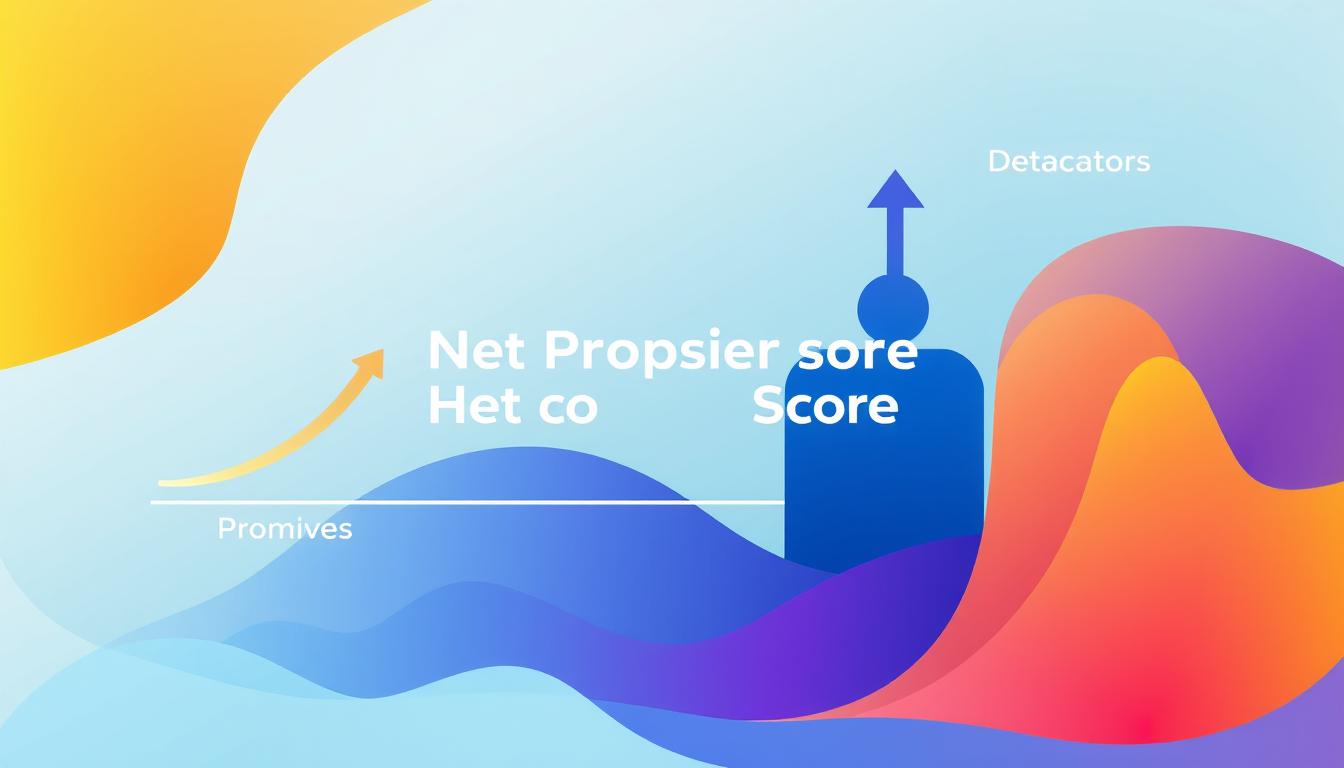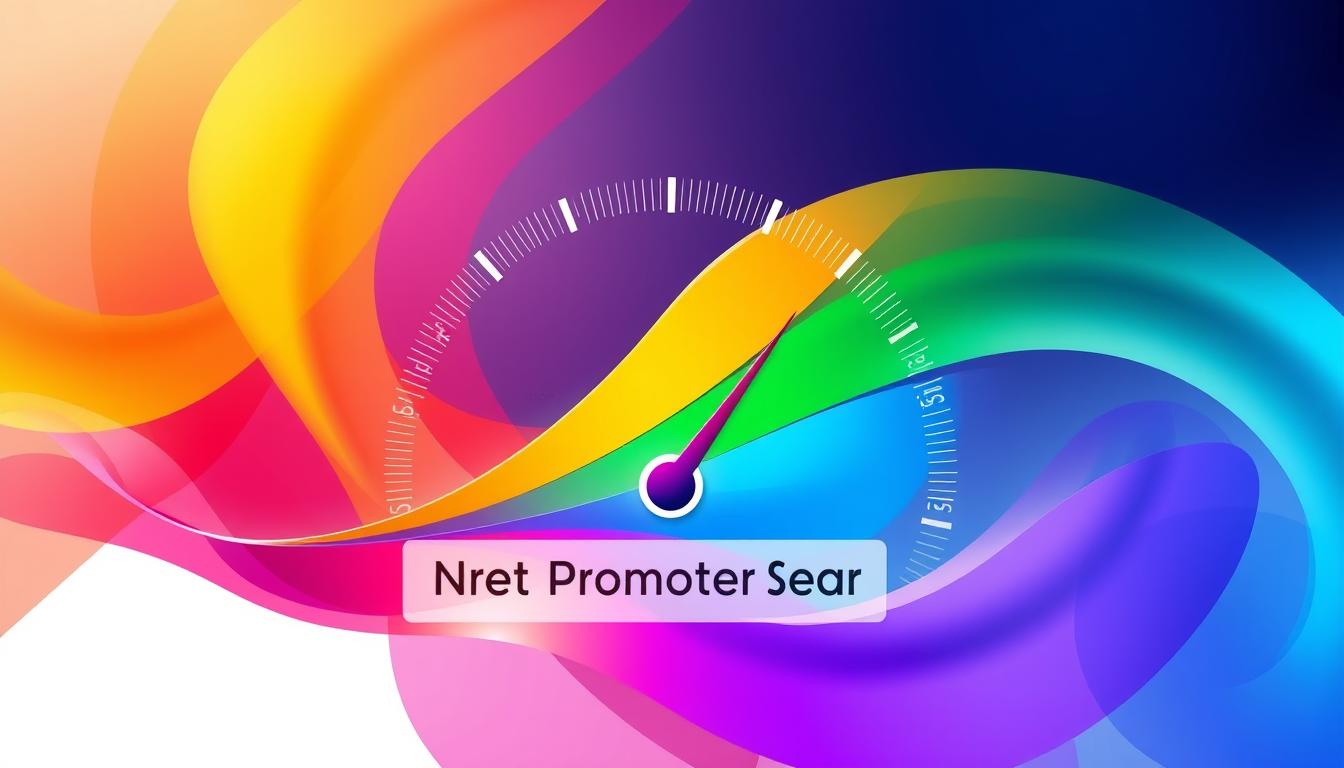In today’s competitive landscape, understanding the Net Promoter Score (NPS) is essential for businesses striving to enhance their customer service experience. NPS is a crucial metric that not only helps assess customer satisfaction but also evaluates customer loyalty. In India, where consumer expectations are rapidly evolving, the integration of NPS and personalization is more important than ever. By utilizing NPS effectively, we can forge stronger relationships with our customers, leading to improved customer loyalty and increased brand advocacy. As we explore this powerful connection, we will uncover how personalized service transforms the customer journey, making a significant impact on overall satisfaction.
Key Takeaways
- NPS serves as a vital tool for measuring customer loyalty.
- Personalization enhances the overall customer service experience.
- Incorporating NPS feedback can significantly improve customer satisfaction.
- Understanding Indian consumer expectations is crucial for business success.
- Stronger customer relationships drive brand advocacy.
Understanding the Net Promoter Score
The Net Promoter Score has emerged as a cornerstone in the realm of customer satisfaction measurement. It provides organizations with a simple yet effective tool to gauge customer loyalty and the likelihood of repeat business. By understanding how customers perceive their experiences, we can make informed decisions to enhance our offerings and build lasting relationships.
Definition and Importance
The Net Promoter Score (NPS) is a widely accepted metric that ranges from -100 to 100, representing customer opinions on whether they would recommend a company to others. This measure is derived from an NPS survey, where respondents provide feedback on their likelihood to recommend a product or service. A score above 0 generally indicates more promoters than detractors, which is favorable for growth. A score above 50 is seen as excellent, signifying strong customer loyalty and satisfaction.
How It’s Measured
Measuring NPS involves a straightforward process. The NPS survey typically includes one key question: “On a scale of 0 to 10, how likely are you to recommend our company to a friend or colleague?” Based on their responses, customers are categorized into three groups:
- Promoters (9-10): Loyal customers likely to refer others.
- Passives (7-8): Satisfied but not enthusiastic enough to promote.
- Detractors (0-6): Unhappy customers at risk of damaging the brand.
To calculate the Net Promoter Score, we subtract the percentage of detractors from the percentage of promoters, providing a clear snapshot of customer sentiment and loyalty.
| Customer Rating | Category | Potential Impact |
|---|---|---|
| 9-10 | Promoters | Increased referrals and sales |
| 7-8 | Passives | Neutral; potential to become promoters |
| 0-6 | Detractors | Risk of negative word-of-mouth |
The Role of Customer Satisfaction Surveys
Customer satisfaction surveys play a crucial role in understanding how our guests perceive their experiences. Different types serve various purposes, helping us gain valuable insights into customer needs and preferences. Conducting these surveys is essential for refining our services and enhancing overall satisfaction levels.
Types of Customer Satisfaction Surveys
There are several distinct types of customer satisfaction surveys, each designed to capture specific feedback. The most common include:
- CSAT Surveys: These measure customer satisfaction by asking respondents to rate their experience on a scale, providing immediate insights into service performance.
- Guest Satisfaction Surveys: Targeted specifically at guests, these surveys assess their overall experience while staying at hotels or using other services.
- Net Promoter Score (NPS): This survey gauges customer loyalty by asking how likely they are to recommend a service or product, linking satisfaction to loyalty.
Benefits of Conducting CSAT Surveys
Implementing a CSAT survey offers numerous benefits that positively contribute to our business strategy:
- Enhanced Understanding: We gain clearer insights into specific areas for improvement, allowing us to address customer pain points effectively.
- Data-Driven Decisions: Feedback from CSAT surveys enables us to make informed decisions related to service enhancements.
- Increased Loyalty: By reacting to customer feedback, we foster better relationships, increasing overall loyalty and repeated business.
Utilizing well-structured customer satisfaction surveys not only drives improvement but also enhances customer loyalty, forming a critical aspect of our ongoing engagement strategy.
NPS and Its Impact on Customer Loyalty
NPS plays a crucial role in understanding customer loyalty and retention. By evaluating NPS feedback, we can draw significant correlations between high scores and increased customer retention. The relationship between these metrics provides us with insights that can transform our customer engagement strategies.
Correlating NPS with Customer Retention
Research shows that a higher NPS often leads to improved customer retention rates. Businesses that actively seek and analyze NPS feedback can identify areas for improvement, making adjustments that resonate with their clientele. This proactive approach enhances customer loyalty, as customers feel valued and heard. A study highlighting this correlation revealed that companies with an NPS above 70 experienced a 50% increase in repeat customers compared to those with scores below 30.
Case Studies of Successful Loyalty Programs
A number of well-known brands have implemented effective loyalty programs using NPS feedback as a foundation. For instance, Starbucks has harnessed NPS to tailor its rewards program, resulting in a remarkable boost in customer loyalty. By leveraging insights gained from customer responses, Starbucks crafted personalized offers that resonate with individual preferences, leading to higher retention rates.
Another example includes Amazon, which utilizes NPS feedback to optimize the customer experience on its platform. Their commitment to customer satisfaction has fostered an environment of lasting loyalty, resulting in significant growth in returning customers. These case studies illustrate the tangible outcomes of integrating NPS into loyalty strategies.
Personalization in Customer Service
In today’s competitive landscape, we recognize the critical role of personalization in customer service. Personalization goes beyond simply addressing customers by their names; it encompasses a tailored approach that enhances their overall experience. This focus on personalized interactions not only boosts customer satisfaction but also fosters loyalty, making it a vital pillar for any successful business.
Why Personalization Matters
Understanding our customers on a deeper level allows us to anticipate their needs and preferences. Personalized experiences help in establishing stronger emotional connections, which translates into increased brand loyalty. Customers are more likely to return when they feel valued and understood, as personalization in customer service encourages repeat business and positive word-of-mouth referrals.
Strategies for Personalized Customer Interactions
Implementing effective strategies for personalized service can transform customer interactions dramatically. Here are some essential strategies:
- Utilize Customer Data: Collect and analyze customer data to understand their behaviors and preferences better.
- Segment Customer Bases: Categorize customers based on demographics or purchase history to tailor communications and services accurately.
- Offer Tailored Communication: Send personalized messages or recommendations that resonate with individual customer interests.
- Engage Through Various Channels: Ensure that personalization is consistent across all customer touchpoints, including social media, email, and in-person interactions.
The Intersection of NPS and Personalization
Understanding the connection between NPS feedback and personalized service is essential for creating meaningful customer experiences. By analyzing survey responses, we can gain insights that guide us toward enhancing our interactions with customers, ensuring they feel valued and heard.
Leveraging NPS Feedback for Personalized Service
We can use NPS feedback to tailor our service approach to meet the unique needs of each customer. By identifying patterns in the survey data, we can segment our audience based on preferences and expectations. This helps us deliver a level of personalized service that resonates well with customers, making them feel special and understood.
“The best way to predict the future is to create it.” – Peter Drucker
Implementing Changes Based on NPS Surveys
Implementing NPS survey changes requires a strategic approach. We need to assess the feedback closely to determine actionable areas for improvement. By involving our teams in the analysis process, we can cultivate innovative solutions that directly address customer concerns. This not only enhances customer satisfaction but also fosters loyalty.
| Feedback Type | Action Taken | Result |
|---|---|---|
| Service Speed | Streamlined processes | Increased customer satisfaction |
| Product Knowledge | Staff training | Higher customer confidence |
| Communication Clarity | Enhanced communication strategies | Improved service ratings |

Key Metrics Related to Service Personalization
Understanding how we measure customer experience can significantly enhance our service personalization strategies. The Customer Effort Score (CES) offers valuable insights into the ease with which customers can engage with our services, complementing our existing Net Promoter Score (NPS) framework. By analyzing the CES, we can gain a clearer picture of how our customers navigate their interactions, enabling us to tailor our offerings to meet their needs more effectively.
Understanding the Customer Effort Score (CES)
The Customer Effort Score is a metric designed to gauge the amount of effort a customer must exert to resolve an issue or accomplish a task. This measure is critical for understanding customer satisfaction, as higher effort often correlates with lower satisfaction. Incorporating the CES score into our customer feedback loop can inform us about pain points in the customer journey.
Utilizing CES Score Questions Effectively
Crafting effective CES score questions is essential for collecting actionable insights. Our CES score questions should be concise and straightforward, allowing customers to express their experiences easily. The goal is to create a question that elicits meaningful responses, such as:
- “How easy was it for you to achieve your goal with our service?”
- “On a scale of 1-7, how much effort did you put into resolving your issue?”
These CES score questions help us identify areas for improvement and streamline our service processes, leading to enhanced customer satisfaction and loyalty.
Implementing a Feedback Loop with NPS
In our journey toward enhancing customer experiences, establishing a feedback loop using NPS is crucial. This approach not only facilitates a continuous improvement cycle but also ensures that we stay aligned with customer expectations.
Creating a Continuous Improvement Cycle
A well-structured feedback loop allows us to utilize NPS insights effectively. By collecting customer feedback systematically, we create an environment conducive to ongoing enhancement of our services. This entails analyzing responses regularly to identify trends and areas for improvement. Acting on this feedback signifies our commitment to customer satisfaction and fosters loyalty.
Utilizing NPS Insights for Service Design
NPS insights provide valuable guidance in service design. We can tailor our offerings to resonate better with customer needs, ensuring a superior experience. This alignment not only enhances satisfaction but also promotes a culture of continuous improvement. Analyzing NPS results enables us to iterate our service offerings, making necessary adjustments based on direct customer input.
Technology’s Role in NPS and Personalization
In the ever-evolving landscape of customer service, technology plays a crucial part in effectively tracking customer satisfaction through Net Promoter Score (NPS). By harnessing advanced tools and platforms, we can gather and analyze customer feedback to not only understand their sentiments but also tailor our services accordingly.
Tools for Tracking Customer Satisfaction
Several tools have emerged that facilitate tracking customer satisfaction with remarkable precision. These platforms allow us to collect data from various customer touchpoints, ensuring we capture comprehensive feedback. Here are some prominent tools:
- SurveyMonkey – Known for its user-friendly interface, this tool simplifies survey creation and analysis.
- Qualtrics – A robust platform that offers in-depth insights into customer experiences and satisfaction levels.
- Zendesk – Integrates customer service and support, providing real-time tracking of satisfaction through NPS.
Implementing these tools enhances our ability to measure and respond to customer feedback in a timely manner, reflecting the true state of customer satisfaction.
Using Automation to Enhance Personalized Service
Automation for personalized service has become indispensable in modern customer engagement. By utilizing automation, we can streamline our responses based on collected data. This not only ensures consistency in communication but also allows for timely follow-ups tailored to each customer’s unique circumstances.
Some benefits of employing automation include:
- Immediate acknowledgment of customer feedback, fostering a sense of value.
- Personalized communication strategies based on customer behavior and preferences.
- Efficient allocation of resources, allowing teams to focus on high-priority issues.
As we explore the capabilities of technology in NPS, it becomes clear that integrating these advanced systems can significantly improve our service delivery. This leads to better customer relationships and ultimately boosts overall satisfaction.
The Future of NPS and Customer Personalization
The landscape of customer feedback continues to evolve, with innovative approaches reshaping how businesses gather and utilize insights. Understanding the implications of emerging trends in customer feedback will prove essential for fostering stronger customer relationships. As we explore the future of NPS, several trends stand out as particularly influential.
Emerging Trends in Customer Feedback
Recent advancements have introduced several noteworthy trends in the realm of customer feedback:
- Sentiment Analysis: Tools that analyze customer emotions reveal deeper insights into satisfaction levels, allowing companies to respond proactively.
- Real-Time Feedback Systems: Instant feedback mechanisms provide organizations with immediate input from customers, enabling quicker adaptations to services and products.
- Omnichannel Feedback Collection: Engaging customers across multiple platforms leads to more comprehensive data that highlights preferences and pain points.
The Role of AI in Personalizing Customer Experiences
Artificial intelligence plays a crucial role in shaping personalized customer experiences. Utilizing AI in personalization enhances our ability to create tailored interactions based on individual preferences. Key applications include:
- Data Analysis: AI algorithms sift through vast amounts of customer data, identifying patterns that inform personalized strategies.
- Predictive Analytics: By anticipating customer needs and behaviors, companies can optimize their approach and improve satisfaction.
- Customized Recommendations: Algorithms can generate personalized suggestions based on previous purchases, browsing history, and feedback.
As we look ahead, blending the future of NPS with emerging customer feedback trends will undoubtedly provide the insights necessary for effective AI in personalization. The focus on these elements, combined with a commitment to customer satisfaction, will pave the way for personalized strategies that resonate profoundly with our audiences.
Conclusion
In summarizing the profound impact of the Net Promoter Score (NPS) on personalized customer service, we recognize its pivotal role in shaping our approach to client interactions. By actively utilizing NPS feedback, organizations can implement significant customer service improvements, leading to enhanced relationships with clients and increased loyalty. This process not only allows businesses to understand customer sentiments better but also empowers them to act on those insights, creating a cycle of continuous enhancement.
As we have explored, the integration of NPS within service strategies transforms the way we engage with customers. Emphasizing client satisfaction through tailored experiences fosters a deeper emotional connection, driving not only retention but also advocacy among satisfied customers. By committing to NPS as a critical measurement tool, we position our businesses to navigate a competitive landscape more effectively, ensuring our efforts are always aligned with customer expectations.
Ultimately, embracing NPS and personalization is no longer a choice but a necessity for businesses aspiring to thrive. By prioritizing these elements, we can create a dynamic environment where customer needs are met with precision, resulting in long-term success and customer loyalty. Let us embark on this transformative journey, fully understanding that the future of customer interactions hinges on our commitment to personalizing every engagement.
FAQ
What is a Net Promoter Score (NPS)?
The Net Promoter Score (NPS) is a customer satisfaction measurement tool designed to gauge customer loyalty by asking a single question: “How likely are you to recommend our company to a friend or colleague?” The responses range from 0 to 10, allowing businesses to categorize respondents as Promoters, Passives, or Detractors based on their scores.
How does NPS feedback help improve customer service?
NPS feedback provides valuable insights into customer sentiment, allowing us to understand areas where we excel and where improvements are needed. By analyzing this feedback, we can tailor our customer service strategies, enhance personalization, and create a better overall customer experience, ultimately increasing loyalty and satisfaction.
What are CSAT surveys and how do they differ from NPS?
Customer Satisfaction (CSAT) surveys measure how satisfied customers are with a specific interaction or experience. Unlike NPS, which assesses overall loyalty and likelihood to recommend, CSAT focuses on immediate feedback regarding a product, service, or experience. Both tools are essential in understanding the customer journey and gathering actionable insights.
How can we effectively implement changes based on NPS surveys?
To effectively implement changes based on NPS surveys, we should identify common themes in customer feedback, prioritize areas for improvement, and communicate our intended changes back to the customers. This transparency builds trust and encourages further engagement, signaling that their opinions have real influence on our service delivery.
What is the Customer Effort Score (CES) and why is it important?
The Customer Effort Score (CES) measures how much effort a customer has to exert to interact with our services or achieve their goals. It is important because reducing customer effort can significantly enhance satisfaction, loyalty, and overall customer experience. A lower CES score typically indicates a smoother, more efficient customer interaction.
How can we utilize technology to track our NPS and customer satisfaction?
We can utilize various tools and platforms that automate the tracking of NPS and customer satisfaction metrics. These technologies enable us to collect and analyze feedback in real-time, which helps us make informed decisions about improving our services and meeting customer demands effectively.
What are some strategies for creating personalized customer interactions?
Strategies for personalized customer interactions include utilizing customer data to understand preferences, segmenting customers based on behavior, tailoring communication and offers, and proactively addressing customer needs. Personalization not only enhances the customer experience but also fosters loyalty and advocacy.
How does NPS correlate with customer retention?
Research shows that a higher NPS score often correlates with increased customer retention rates. Companies with a strong base of Promoters tend to enjoy lower churn rates, as satisfied customers are more likely to remain loyal and refer others, contributing to long-term business success.
What role does automation play in enhancing personalized service?
Automation plays a critical role in enhancing personalized service by streamlining processes such as follow-ups, survey distribution, and data analysis. By automating these tasks, we can ensure timely responses and individualized communication, significantly improving the customer experience.
What future trends should we be aware of regarding customer feedback mechanisms?
Future trends in customer feedback mechanisms include the growing use of sentiment analysis, real-time feedback systems, and artificial intelligence. AI can help us analyze vast amounts of customer data to create highly personalized experiences that drive satisfaction and loyalty, setting the stage for more effective customer engagement strategies.






